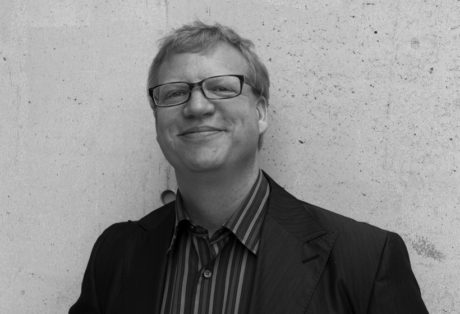Gregor Kalas

ADDRESS
Phone
Gregor Kalas
Associate Professor
Gregor Kalas investigates the architecture of Late Antiquity and the early Middle Ages with a particular focus on the post-classical adaptations of ancient buildings and monuments. In his publications, Kalas explores the reuse of ancient structures by highlighting that architectural reconstruction engages with historical memories and the reconstitution of lapsed time. His monograph, The Restoration of the Roman Forum in Late Antiquity: Transforming Urban Space (University of Texas Press, 2015), traces the political significance of reestablishing links to the venerable past in downtown Rome during Late Antiquity. His co-edited volume, Urban Developments in Late Antique and Medieval Rome (Amsterdam University Press, 2021), sheds light on the vitality of the post-classical city. Support for Kalas’s research has been awarded by the National Endowment for the Humanities and the Mrs. Giles Whiting Foundation. Kalas has also pursued investigations of late antique urban landscapes by digitally reconstructing the center of Rome in order to reveal the ritual function of buildings and the topographical linkages between significant city spaces. Currently, Kalas’s research concerns the early medieval reuse of public buildings in Rome to establish charity centers such as the church of Santa Maria Antiqua.
Education
- Ph.D., Bryn Mawr College, 1999
- M.A., The Johns Hopkins University, 1989
- B.A., Williams College, 1985
Selected Publications
Monograph:
The Restoration of the Roman Forum in Late Antiquity: Transforming Public Space. Ashley and Peter Larkin Series in Greek and Roman Culture (Austin: University of Texas Press, 2015) [DOI 10.7560/760783].
Edited volume:
Gregor Kalas and Ann van Dijk, eds. Urban Developments in Late Antique and Medieval Rome: Revising the Narrative of Renewal (Amsterdam: Amsterdam University Press, 2021). [DOI 10.5117/97894629289085].
Articles and Book Chapters:
“Portraits of Poets and the Lecture Halls in the Forum of Trajan: Masking the Cultural Tensions of Late Antique Rome.” In Urban Developments in Late Antique and Medieval Rome: Revising the Narrative of Renewal, Gregor Kalas and Ann van Dijk, eds. 75-108 (Amsterdam: Amsterdam University Press, 2021).[DOI 10.5117/97894629289085_CH03]
“Acquiring the Antique in Byzantine Rome: The Economics of Architectural Reuse at S. Maria Antiqua.” In Reuse and Renovation in Roman Material Culture: Functions, Aesthetics, Interpretations. Diana Ng and Maria Swetnam-Burland, eds. 186-207 (New York: Cambridge University Press, 2019) [DOI 10.1017/9781108473897.]
“The Divisive Politics of Phocas (602-610) and the Last Imperial Monument of Rome,” Antiquité Tardive 25 (2017), 173-190 [DOI 10.1484/J.AT.5.114856]
“Art and Architecture, Roman and Post-Roman;” “Otranto” (with O.Nicholson); “Portus;“ “Rome: Secular Buildings and Topography.” Oxford Dictionary of Late Antiquity. O. Nicholson, ed. Oxford: Oxford University Press, 2018,186-189; 1115; 1215; 1302-1306. [DOI:10.1093/acref/9780198662778.001.0001]
“`Memorials to the Ability of Them All’: Tetrarchic Displays in the Roman Forum’s Central Area,” in Political Landscape of Capital Cities, Jelena Bogdanović, Jessica Christie, and Eulogio Guzmán eds. (Boulder: University Press of Colorado, 2016), 65-96 [DOI 10.5876/9781607324690.c002].
“Architecture and Elite Identity in Late Antique Rome: Appropriating the Past at Sant’Andrea Catabarbara,” Papers of the British School at Rome 81 (2013): 279-302 [DOI 10.1017/S0068246213000111].
“Writing and Restoration in Rome: Inscriptions, Statues, and the Late Antique Preservation of Buildings,” in Cities, Texts, and Social Networks, 400-1500: Experiences and Perceptions of Medieval Urban Space, Caroline Goodson et al. eds. (Surrey: Ashgate, 2010), 21-43.
“Conservation, Erasure, and Intervention: Rome’s Ancient Heritage and the History of SS. Cosma e Damiano,” Arris 16 (2005), 1-11.
“Topographical Transitions: The Oratory of the Forty Martyrs and Exhibition Practices in the Early Medieval Roman Forum,” in Santa Maria Antiqua al Foro Romano cento anni dopo. Atti del colloquio internazionale, 5-6 maggio 2000, John Osborne et al. eds. (Rome: Campisano editore, 2004), 201-213.